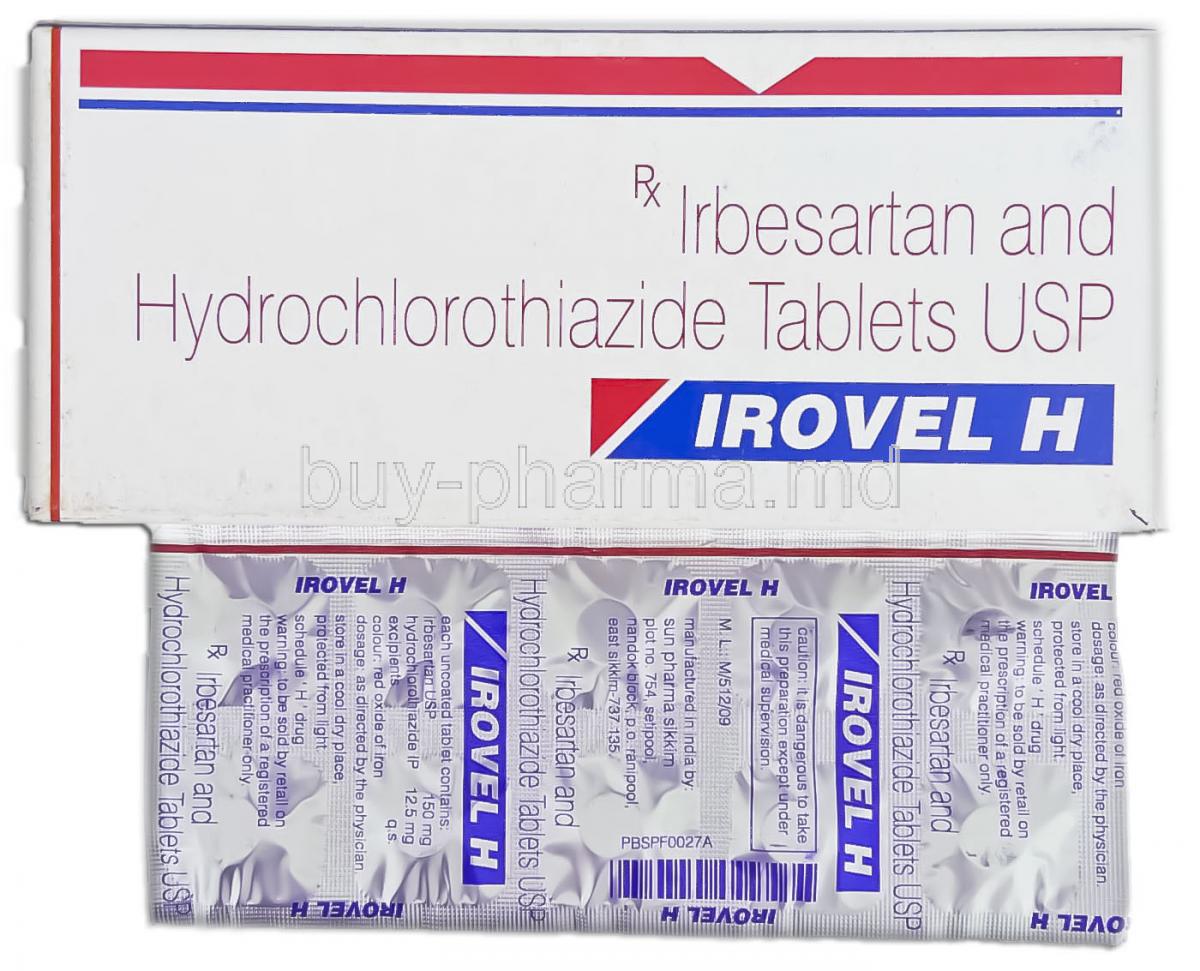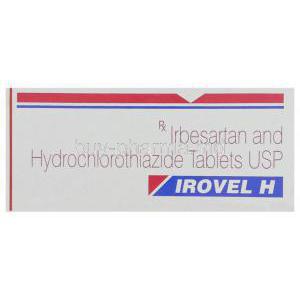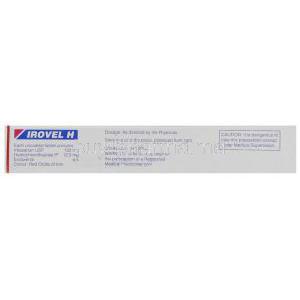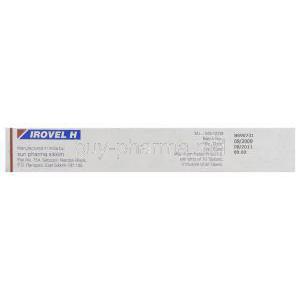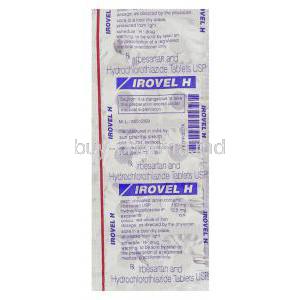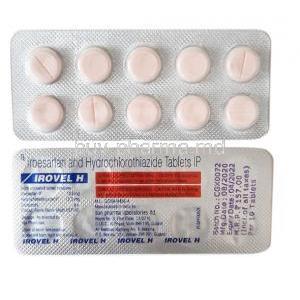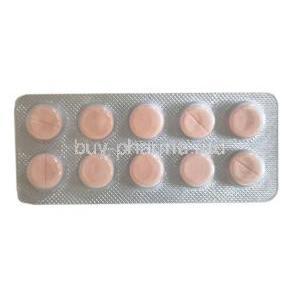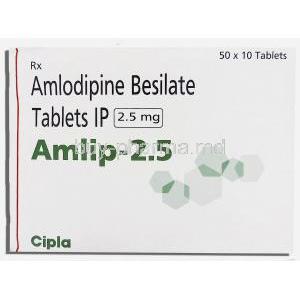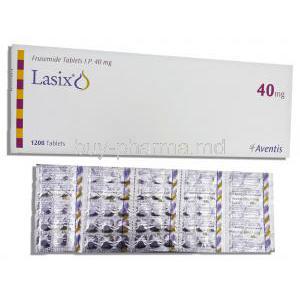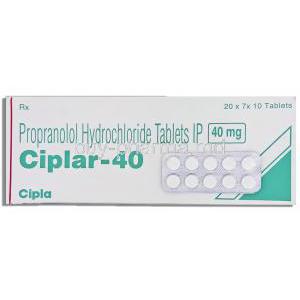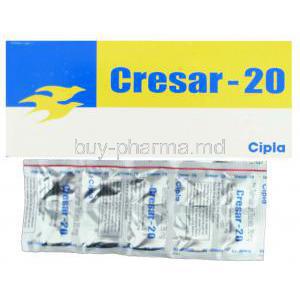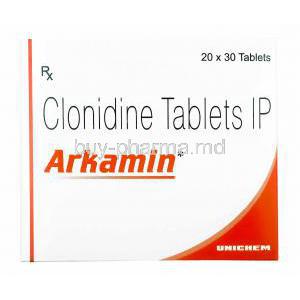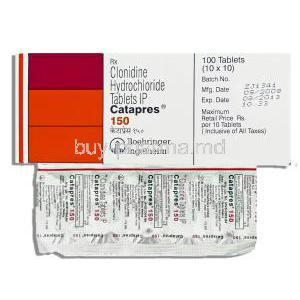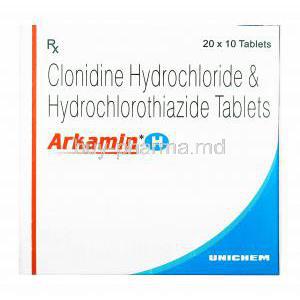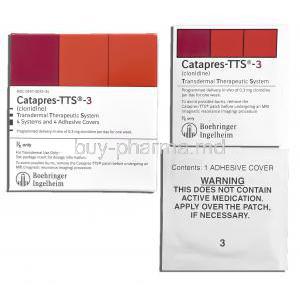1. Introduction
1.1 Overview of Irovel H
Irovel H is a fixed-dose combination of two antihypertensive agents, Irbesartan and Hydrochlorothiazide. It is prescribed to control elevated blood pressure, a condition that silently damages the heart, kidneys, and blood vessels. By combining an angiotensin II receptor blocker (ARB) with a thiazide diuretic, Irovel H provides superior blood pressure reduction compared to monotherapy.
1.2 Therapeutic Classification: ARB with Thiazide Diuretic
This medication belongs to the pharmacological class of ARB–diuretic combinations. It offers the dual benefit of vasodilation through blockade of angiotensin II receptors and volume reduction via enhanced urinary excretion of sodium and water.
1.3 Manufacturer and Global Availability
Irovel H is produced by leading pharmaceutical manufacturers recognized for strict quality assurance standards. It is distributed globally under various trade names and is approved by major regulatory authorities for the management of hypertension.
1.4 Clinical Significance in Hypertension Management
Hypertension is a chronic condition requiring sustained control to prevent complications such as stroke, heart failure, and chronic kidney disease. Irovel H effectively lowers systolic and diastolic pressures by targeting two distinct physiological pathways, ensuring long-term cardiovascular protection.
1.5 Role in Combination Therapy for Resistant Hypertension
For patients unresponsive to monotherapy, Irovel H serves as an essential therapeutic option. Its dual-action mechanism aids in achieving target blood pressure levels with fewer adverse effects and improved adherence.
2. Composition and Formulation
2.1 Active Ingredients: Irbesartan and Hydrochlorothiazide
Each tablet of Irovel H contains two active agents: Irbesartan, an angiotensin II receptor antagonist, and Hydrochlorothiazide, a thiazide diuretic. Their combination ensures optimal management of hypertension through complementary pharmacodynamics.
2.2 Strengths and Dosage Forms Available
Irovel H is available in several strengths:
- 150 mg Irbesartan / 12.5 mg Hydrochlorothiazide
- 300 mg Irbesartan / 12.5 mg Hydrochlorothiazide
- 300 mg Irbesartan / 25 mg Hydrochlorothiazide
These variants allow physicians to tailor therapy based on the patient’s blood pressure response and tolerance.
2.3 Inactive Ingredients and Excipients
Inactive components include lactose monohydrate, microcrystalline cellulose, povidone, magnesium stearate, and other pharmaceutical excipients ensuring tablet stability and uniform dissolution.
2.4 Pharmacological Class of Each Component
Irbesartan belongs to the ARB class, while Hydrochlorothiazide is classified as a thiazide diuretic. Together, they deliver a synergistic antihypertensive response with complementary effects on vascular tone and fluid balance.
3. Mechanism of Action (How It Works)
3.1 Irbesartan: Angiotensin II Receptor Antagonist Mechanism
Irbesartan selectively blocks the binding of angiotensin II to AT₁ receptors in vascular smooth muscle and adrenal tissue. This inhibition prevents vasoconstriction and aldosterone secretion, resulting in lowered peripheral resistance and blood pressure.
3.2 Hydrochlorothiazide: Diuretic Effect and Sodium Excretion
Hydrochlorothiazide acts on the distal convoluted tubule in the nephron, inhibiting sodium and chloride reabsorption. The increased urinary output decreases plasma volume, thereby reducing cardiac workload and systemic blood pressure.
3.3 Combined Synergistic Antihypertensive Effect
The combination enhances blood pressure reduction beyond what each drug achieves alone. The ARB minimizes potassium loss caused by the diuretic, improving electrolyte balance and reducing side effects.
3.4 Effect on Vascular Resistance and Fluid Balance
Vasodilation and volume reduction lead to improved arterial compliance and decreased preload and afterload on the heart, optimizing hemodynamic stability.
3.5 Onset of Action and Duration of Therapeutic Effect
Antihypertensive effects are typically observed within 1–2 hours post-administration, reaching peak efficacy in 6–8 hours, with a duration lasting up to 24 hours.
4. Clinical Uses and Indications
4.1 Primary Indication: Essential Hypertension
Irovel H is primarily indicated for the treatment of essential hypertension in adults where monotherapy is insufficient to control blood pressure.
4.2 Secondary Prevention of Cardiovascular and Renal Complications
Regular use aids in the prevention of myocardial infarction, stroke, and diabetic nephropathy by reducing hemodynamic stress and vascular remodeling.
4.3 Role in Hypertensive Patients with Left Ventricular Hypertrophy
By decreasing afterload, Irovel H helps regress left ventricular hypertrophy and improves cardiac function.
4.4 Adjunctive Use in Chronic Kidney Disease with Proteinuria
Irbesartan’s renoprotective effect complements diuretic-induced volume control, delaying progression of renal impairment.
4.5 Off-Label Uses
- Prevention of diabetic nephropathy
- Adjunctive therapy in heart failure under specialist supervision
- Post-stroke management to maintain stable blood pressure
5. Dosage and Administration
5.1 Recommended Starting Dose and Maintenance Dose
The initial recommended dose is 150 mg/12.5 mg once daily. Depending on clinical response, the dose may be increased to 300 mg/12.5 mg or 300 mg/25 mg daily.
5.2 Maximum Daily Dosage Limits
Maximum efficacy is usually achieved at 300 mg of Irbesartan and 25 mg of Hydrochlorothiazide per day.
5.3 Administration with or without Food
Irovel H may be taken with or without food. Consistent timing each day ensures stable plasma concentration.
5.4 Timing of Administration (Morning vs. Evening)
Morning administration is preferred to align with the diuretic’s peak action and minimize nocturia.
5.5 Dose Adjustment in Renal or Hepatic Impairment
Lower doses are advised for patients with renal or hepatic impairment. Regular renal function monitoring is essential.
5.6 Switching from Monotherapy to Combination Therapy
Patients inadequately controlled with Irbesartan or Hydrochlorothiazide alone may transition to Irovel H under physician supervision.
5.7 Missed Dose and Discontinuation Guidance
If a dose is missed, it should be taken as soon as remembered. Avoid doubling doses. Gradual discontinuation under medical guidance prevents rebound hypertension.
6. Side Effects
6.1 Overview of Possible Side Effects
Most side effects are mild and transient. Serious adverse reactions are rare but require immediate medical evaluation.
6.2 Common Side Effects
- Dizziness, headache, or fatigue
- Increased urination and mild dehydration
- Muscle cramps, nausea, or weakness
6.3 Less Common but Significant Adverse Reactions
Hypotension, electrolyte imbalance, photosensitivity, and allergic rash may occur in susceptible individuals.
6.4 Electrolyte Imbalance and Metabolic Changes
Periodic monitoring of sodium, potassium, and uric acid levels is advised, especially in long-term therapy.
6.5 Long-Term Tolerability Profile
Irovel H demonstrates a strong safety record, with good long-term adherence and minimal metabolic disturbances.
6.6 Incidence Rate and Post-Marketing Data
Post-marketing studies confirm low incidence of adverse events, supporting its continued use in chronic hypertension management.
7. Warnings and Important Precautions
7.1 Risk of Hypotension and Volume Depletion
Patients with volume or salt depletion may experience symptomatic hypotension, particularly after the first dose.
7.2 Monitoring of Serum Electrolytes and Renal Function
Periodic laboratory testing helps identify early signs of renal impairment or electrolyte imbalance.
7.3 Photosensitivity Reactions from Hydrochlorothiazide
Patients should avoid prolonged sun exposure and use protective clothing or sunscreen to prevent photodermatitis.
7.4 Hyperuricemia and Gout Exacerbation
Hydrochlorothiazide may elevate uric acid levels; caution is required in patients with a history of gout.
7.5 Risk of Acute Kidney Injury in Volume-Depleted Patients
Excessive diuresis can cause renal hypoperfusion. Adequate hydration is crucial during therapy.
7.6 Precaution in Patients with Hepatic Cirrhosis or Biliary Obstruction
Dosage adjustments and close supervision are required due to altered drug metabolism and clearance.
7.7 Avoidance of Alcohol and Other Hypotensive Agents
Alcohol, narcotics, or sedatives may potentiate hypotension. Caution is advised when co-administered.
8. Contraindications
8.1 Known Hypersensitivity
Contraindicated in individuals allergic to Irbesartan, Hydrochlorothiazide, or other sulfonamide derivatives.
8.2 Anuria or Severe Renal Impairment
Use is prohibited in patients unable to produce urine or those with advanced renal failure.
8.3 Pregnancy and Lactation Contraindications
ARBs can cause fetal toxicity and neonatal renal failure; Irovel H should be discontinued immediately if pregnancy is detected.
8.4 Severe Hepatic Dysfunction
Use is contraindicated in patients with marked hepatic impairment due to altered metabolism of both agents.
8.5 Concomitant Use with Aliskiren in Diabetic Patients
Combination with Aliskiren is not recommended as it increases the risk of renal dysfunction and hyperkalemia.
9. Drug Interactions
9.1 Interaction with Potassium-Sparing Diuretics and Supplements
Concurrent use may cause hyperkalemia; regular serum potassium monitoring is essential.
9.2 Lithium Toxicity Potentiation
Irovel H may elevate lithium levels, enhancing its neurotoxic potential. Avoid or monitor closely.
9.3 NSAIDs and Renal Function Compromise
Nonsteroidal anti-inflammatory drugs can diminish the antihypertensive effect and impair renal function when used together.
9.4 Alcohol and Central Nervous System Depressants
These agents can exacerbate dizziness and postural hypotension. Consumption should be limited.
9.5 Corticosteroids and Diabetic Agents
Corticosteroids may counteract the diuretic effect, while diabetic agents may require dose adjustment due to altered glucose control.
9.6 Dual Blockade of the Renin–Angiotensin System
Combining Irovel H with other RAAS inhibitors increases risks of renal impairment and hyperkalemia without significant benefit.
9.7 Importance of Medication Reconciliation
Patients should inform their healthcare provider of all current medications and supplements to avoid adverse pharmacological interactions.
10. Careful Administration
10.1 Patients with Renal Artery Stenosis
Patients with bilateral renal artery stenosis or stenosis in a solitary kidney should receive Irovel H with extreme caution. The inhibition of the renin–angiotensin–aldosterone system may precipitate acute renal failure in these individuals. Regular monitoring of serum creatinine and glomerular filtration rate (GFR) is essential to detect early deterioration in renal function.
10.2 Individuals with Electrolyte Disturbances
Hydrochlorothiazide may induce electrolyte imbalance, leading to hyponatremia, hypokalemia, or hypomagnesemia. Periodic assessment of serum electrolytes is crucial, particularly in patients experiencing vomiting, diarrhea, or those on concurrent diuretic therapy. Potassium supplementation or dietary modification may be warranted based on laboratory results.
10.3 Monitoring in Patients on Digitalis or Antiarrhythmics
Patients concurrently receiving digitalis glycosides or antiarrhythmic agents should be carefully observed. Hypokalemia induced by the diuretic component may potentiate digitalis toxicity and increase the risk of cardiac arrhythmias. Regular ECG evaluation and serum potassium checks are recommended.
10.4 Adjustment in Patients with Diabetes Mellitus
Thiazide diuretics can elevate plasma glucose levels, necessitating adjustments in insulin or oral hypoglycemic dosages. Blood glucose monitoring should be intensified when initiating or modifying Irovel H therapy. Additionally, diabetic nephropathy patients should be assessed for potential renal impairment progression.
10.5 Elderly Patients with Reduced Renal Clearance
The elderly population often exhibits decreased renal function and slower drug clearance. Dose reduction and gradual titration are advisable to prevent excessive hypotension or electrolyte imbalance. Routine monitoring of renal parameters enhances treatment safety in this demographic.
11. Administration in Special Populations
11.1 Elderly Patients
Age-related physiological decline may alter both renal and hepatic metabolism. Elderly patients are more susceptible to orthostatic hypotension and dehydration. Initiate therapy at the lowest effective dose and adjust gradually. Periodic blood pressure monitoring, renal function tests, and hydration assessment are strongly advised.
- Reduced clearance of both irbesartan and hydrochlorothiazide
- Increased risk of falls due to postural hypotension
- Requirement for individualized dosing and clinical follow-up
11.2 Pregnant Women and Nursing Mothers
Irovel H is contraindicated during pregnancy due to fetotoxic potential. Exposure to ARBs during the second or third trimester can result in fetal renal dysfunction, oligohydramnios, or neonatal death. Women of childbearing potential should employ effective contraception throughout therapy.
- Fetotoxic and teratogenic risks during pregnancy
- Contraindicated in all trimesters
- Both agents are excreted in breast milk and may harm nursing infants
- Alternative antihypertensives such as methyldopa or labetalol are preferred during pregnancy
11.3 Pediatric Use
Safety and efficacy data for Irovel H in pediatric populations remain limited. The drug should only be used under strict specialist supervision when no suitable alternatives exist. Dosing, if prescribed, must consider body weight, renal function, and clinical response.
- Insufficient clinical evidence in children
- Potential for severe electrolyte imbalance
- Specialist oversight required for any off-label use
12. Overdosage and Emergency Management
12.1 Expected Symptoms of Overdose
Manifestations include pronounced hypotension, dizziness, dehydration, electrolyte disturbances, and in severe cases, acute renal failure. Cardiac rhythm disturbances may occur secondary to hypokalemia.
12.2 Immediate Supportive Treatment and Monitoring
Treatment is symptomatic and supportive. Maintain airway patency and monitor vital signs continuously. Blood pressure should be restored using intravenous fluids or vasopressors as clinically indicated.
12.3 Gastric Lavage and Activated Charcoal Considerations
If ingestion is recent, gastric lavage or administration of activated charcoal can reduce absorption. Induction of emesis is generally not recommended due to aspiration risk.
12.4 Fluid and Electrolyte Replacement
Rehydration and correction of electrolyte imbalances are crucial. Monitor serum sodium, potassium, and creatinine levels at regular intervals during recovery.
12.5 Hemodialysis Efficacy for Irbesartan and Hydrochlorothiazide
Irbesartan is not significantly removed by hemodialysis due to high plasma protein binding. However, Hydrochlorothiazide may be partially dialyzable, providing limited benefit in severe toxicity.
13. Storage and Handling Precautions
13.1 Recommended Storage Temperature and Humidity
Store at controlled room temperature between 15°C and 30°C. Excess humidity or direct exposure to sunlight can degrade active constituents, reducing therapeutic potency.
13.2 Keep Out of Reach of Children
Accidental ingestion by children can cause severe hypotension or electrolyte imbalance. Always store medication in child-resistant containers and in secure locations.
13.3 Protection from Light and Moisture
Keep tablets in original blister packs until administration. Moisture and UV exposure can compromise tablet integrity and stability.
13.4 Disposal of Expired or Unused Medication
Expired medication should be discarded responsibly according to local pharmaceutical waste regulations. Do not dispose of tablets in household drains or general waste.
13.5 Handling Instructions for Pharmacies and Caregivers
Ensure tablets are dispensed with intact packaging and correct labeling. Pharmacists should confirm dosage strength prior to dispensing to avoid administration errors.
14. Pharmacokinetic Profile
14.1 Absorption Rate and Bioavailability
Irbesartan exhibits an oral bioavailability of approximately 60–80%, while Hydrochlorothiazide achieves around 70%. Both agents reach peak plasma concentration within 1.5–3 hours post-ingestion.
14.2 Protein Binding and Distribution
Irbesartan is highly protein-bound (≈96%), ensuring prolonged systemic circulation. Hydrochlorothiazide demonstrates moderate plasma binding, facilitating rapid renal elimination.
14.3 Metabolic Pathways and Half-Life
Irbesartan undergoes hepatic metabolism primarily via CYP2C9, forming inactive metabolites. The elimination half-life averages 11–15 hours, allowing once-daily dosing. Hydrochlorothiazide is excreted unchanged with a half-life of 6–15 hours.
14.4 Elimination via Renal and Biliary Routes
Approximately 20% of Irbesartan is eliminated renally, with the remainder excreted through the biliary tract. Hydrochlorothiazide is largely excreted unchanged in urine within 24 hours.
14.5 Effect of Renal or Hepatic Impairment on Pharmacokinetics
In renal impairment, Hydrochlorothiazide clearance diminishes significantly, requiring dose adjustment. Hepatic impairment prolongs Irbesartan elimination, necessitating close monitoring of systemic exposure.
15. Patient Counseling Information
15.1 Importance of Adherence and Daily Dosing Consistency
Patients should take Irovel H at the same time each day to maintain consistent plasma drug levels. Skipping doses reduces antihypertensive control and increases cardiovascular risk.
15.2 Warning Signs Requiring Medical Attention
Seek immediate medical evaluation if symptoms such as severe dizziness, persistent vomiting, irregular heartbeat, or sudden swelling of extremities occur.
15.3 Lifestyle Modifications for Enhanced Efficacy
- Reduce dietary sodium intake
- Maintain optimal body weight
- Engage in moderate physical activity
- Avoid excessive alcohol consumption
15.4 Cautions Regarding Dehydration, Heat, and Alcohol
Excessive sweating, prolonged sun exposure, or alcohol consumption may amplify hypotensive effects. Hydration should be maintained, particularly during summer months.
15.5 Regular Follow-up and Laboratory Monitoring
Routine blood tests for electrolytes, renal function, and blood pressure assessments are vital. Continuous medical supervision ensures safety and therapeutic success.
16. Handling Precautions for Healthcare Providers
16.1 Safe Handling of Bulk Tablets and Packaging
Healthcare personnel should handle tablets using dry gloves to prevent moisture contamination. Maintain strict adherence to storage guidelines.
16.2 Avoidance of Moisture Exposure During Dispensing
Dispense tablets swiftly in low-humidity environments. Seal containers immediately after opening to avoid degradation.
16.3 Verification of Tablet Strength Before Administration
Confirm tablet identification and dosage before dispensing to prevent dosing errors. Cross-check batch numbers during inventory management.
16.4 Counseling for Potential Drug Interactions and Monitoring
Provide patients with information regarding possible interactions with NSAIDs, lithium, or potassium supplements. Encourage adherence to scheduled laboratory evaluations for safety assurance.

